|
|
|
|
|
|
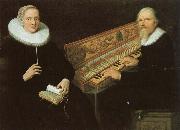 |
christian schubart
|
|
German poet,writer on music and composer. A distinguished keyboard player, he served at the Werttemberg court, 1769-73, then worked in Augsburg and Ulm. After imprisonment, 1777-87 (for insulting a duke's mistress), he became court and theatre poet at Stuttgart. As a composer he was best known for his lieder. His writings, including an important work on musical aesthetics (1806) and essays in his own periodical, stress expression in music. His poetry was often set; Schubert's four settings include Die Forelle and An meine Klavier.
|
|
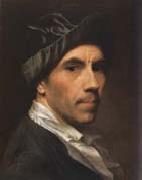 |
Christian Seybold
|
|
1690/7-1768
German painter, active in Austria. He went to Vienna in his youth and, apparently self-taught (Hagedorn), became a portrait-painter. His earliest known work, surviving only in an engraving (1728) by Andreas Schmutzer (1700-40) and Josef Schmutzer, is a portrait of Graf Johann Adam Questenberg in the formal Baroque style. Subsequently, under the influence of Balthasar Denner, he turned to a more intimate style of representation, |
|
|
|
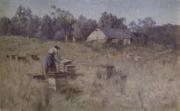 |
Clara Southern
|
|
Australian artist, 1860-1940
Australian painter. One of the first generation of progressive, professionally educated Australian women artists, she began her training as a pupil of Mme Mouchette, painter, schoolmistress and founder of the Alliance Fran?aise in Melbourne; and later took lessons from Walter Withers. As a student at the National Gallery of Victoria (1883-7) she was nicknamed 'Panther' for her lithe beauty. From mid-1888 she shared a teaching studio with Jane Sutherland in the new purpose-built Grosvenor Chambers, where Tom Roberts was a neighbour. She had 'caught the "Impressionist" fever', reported Table Talk (2 Aug 1889), and showed 'a great variety of charming little sketches, which however are not intended for exhibition'. She showed with the Victorian Artists' Society (1889-1917): mainly subjects around Kyneton and Melbourne's outer suburbs, painted in the fresh, quasi-Impressionist style characteristic of the Heidelberg school. |
|
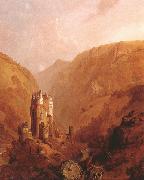 |
Clarkson Frederick Stanfield
|
|
English Painter, 1793-1867
He is often wrongly referred to as William Clarkson Stanfield. The son of Mary Hoad and James Field Stanfield, an Irish actor and author, he was apprenticed to a heraldic coach painter at the age of 12, but in 1808 he abandoned this and went to sea in a collier. In 1812 he was press-ganged and spent two years on HMS Namur, the guard-ship at Sheerness. After being discharged as the result of an injury in 1814, he joined the merchant navy, sailing to China in the Indiaman Warley in 1815. Soon after his return in 1816 he missed his ship and became a scene painter, first at the Royalty Theatre, Stepney, and then at the Royal Coburg, Lambeth. There he was later joined by David Roberts, who became a lifelong friend, and in 1822 both men were employed as scene painters at the Theatre Royal, Drury Lane. During the next 12 years Stanfield established himself as the most talented scene painter of his day, causing a sensation with some of his huge moving dioramas such as the scenes of Venice in the pantomine Harlequin and Little Thumb (1831). Meanwhile he was building an equally impressive reputation as an easel painter. He first exhibited at the Royal Academy in 1820 and continued to exhibit there regularly until his death. He was elected ARA in 1832 and RA in 1835. |
|
 |
clyfford still
|
|
Clyfford Still (November 30, 1904 - June 23, 1980) was an American painter, and one of the leading figures of Abstract Expressionism.
Clyfford Still was a leader in the first generation of Abstract Expressionists who developed a new, powerful approach to painting in the years immediately following World War II. Still's contemporaries included Philip Guston, Franz Kline, Willem de Kooning, Robert Motherwell, Barnett Newman, Jackson Pollock, and Mark Rothko. Though the styles and approaches of these artists varied considerably, Abstract Expressionism is marked by abstract forms, expressive brushwork, and monumental scale, all of which were used to convey universal themes about creation, life, struggle, and death (the human condition), themes that took on a considerable relevance during and after World War II. Described by many as the most anti-traditional of the Abstract Expressionists, Still is credited with laying the groundwork for the movement. Still's shift from representational painting to abstraction occurred between 1938 and 1942, earlier than his colleagues, who continued to paint in figurative-surrealist styles well into the 1940s.
Still was born in 1904 in Grandin, North Dakota and spent his childhood in Spokane, Washington and Bow Island in southern Alberta, Canada. Although Abstract Expressionism is identified as a New York movement, Still's formative works were created during various teaching posts on the West Coast, first in Washington State at Washington State University (1935-41). His work of this period is marked by an expressive figurative style used in depictions of the people, buildings, tools and machinery characteristic of farm life. By the late 1930s, he began to simplify his forms as he moved from representational painting toward abstraction. In 1941 Still relocated to the San Francisco Bay area where, following work in various war industries, he became a highly influential professor at the California School of Fine Arts and what is now known as the San Francisco Art Institute. He taught there from 1946-1950 (with a break in the summer of 1948 when he returned to New York). It was during this time when Still broke through to his mature style. Still also taught at Virginia Commonwealth University from 1943-45. |
|
 |
Colman Samuel
|
|
American Hudson River School Painter , 1832-1920
was an American painter, interior designer, and writer, probably best remembered for his paintings of the Hudson River. Born in Portland, Maine, Colman moved to New York City with his family as a child. His father opened a bookstore, attracting a literate clientele that may have influenced Colman's artistic development. He is believed to have studied briefly under the Hudson River school painter Asher Durand, and he exhibited his first work at the National Academy of Design in 1850. By 1854 he had opened his own New York City studio. The following year he was elected an associate member of the National Academy, with full membership bestowed in 1862. His landscape paintings in the 1850s and 1860s were influenced by the Hudson River school, an example being Meadows and Wildflowers at Conway (1856) now in the collection of the Frances Lehman Loeb Art Center at Vassar College. He was also able to paint in a romantic style, which had become more fashionable after the Civil War. One of his best-known works, and one of the iconic images of Hudson River School art, is his Storm King on the Hudson (1866), now in the collection of the Smithsonian American Art Museum in Washington, DC. Colman was an inveterate traveler, and many of his works depict scenes from foreign cities and ports. He made his first trip abroad to France and Spain in 1860-1861, and returned for a more extensive four-year European tour in the early 1870s in which he spent much time in Mediterranean locales. |
|
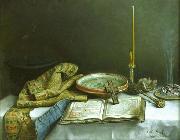 |
Constantin Daniel Stahi
|
|
(November 14, 1844 - June 18, 1920) was a Romanian painter and gravure artist.
In 1862 he entered the National School of Fine Arts from Iaşi where he was taught by Gheorghe Panaiteanu Bardasare and Gheorghe Şiller. He continued his artistic education in Munich where, for seven years, he studied painting, metal gravure and xylography.
He painted still life paintings representing small objects that were surrounding him, such as old books, newspapers, religious items, chairs, shoes, plates and especially fruits. Also, he painted many portraits of famous people of his time (for example Gheorghe Asachi, painted in 1881). Many others of his paintings take inspiration from the simple life in the countryside in idyllic compositions and by painting peasants having as models people living in Bavaria and Moldova regions.
Beside his artistic career, he was a professor and, later on, the headmaster of the National School of Fine Arts in Iaşi between 1892 and 1902, following Gheorghe Panaiteanu Bardasare.
He died in his house on Bărboi street in Iaşi on June 18, 1920 and was interred at Eternitatea Cemetery.
|
|
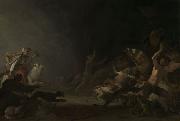 |
Cornelis Saftleven
|
|
(c. 1607, Gorinchem - 1 June 1681, Rotterdam) was a Dutch Golden Age painter
He was born into a family of artists, and learned to paint from his father Herman, along with his brothers Abraham and Herman Saftleven the Younger. He lived for a time in Utrecht with his brother.
Saftleven's subject matter covered various subjects, including genre works, portraits, beach scenes, and biblical and mythological themes. Some consider his images of Hell to be his most individual contribution to Dutch painting
|
|
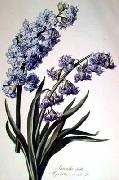 |
Cornelis van Spaendonck Prints
|
|
Dutch 1756-1840
Cornelis van Spaendonck (7 December 1756 - 22 December 1839) was a Dutch painter who was a native of Tilburg. Spaendonck initially worked under artist Guillaume-Jacques Herreyns (1743-1827) in Antwerp, and in 1773 moved to Paris to study and work with his brother, floral painter G??rard van Spaendonck (1746-1822). From 1785 to 1800, Cornelis van Spaendonck was head of the porcelain works at S??vres. Due to difficulties encountered as an administrator, he was relieved of his directorship in 1800, but remained at S??vres as a designer and artist until 1808.
In 1789 Spaendonck became a member of the Acad??mie des Beaux Arts. He painted throughout his lifetime, and displayed his works at the Salons of Paris until 1833. Most of Spaendonck's works were created with oils and gouache, and he is remembered for his lush still-lifes of flowers. Among his paintings were subjects such as De Fleurs Et Fruits, Vase De Fleurs, Bouquet De Different Fleurs, Fleurs Du Jardin, Corbeille Fleurs, et al. At his death in 1840 there were 29 paintings in his studio, which were auctioned soon afterwards. |
|
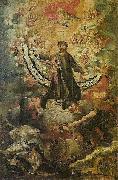 |
Cuzco School
|
|
The Cuzco School (Escuela Cuzqueña) was a Roman Catholic artistic tradition based in Cusco, Peru (the former capital of the Inca Empire) during the Colonial period, in the 16th, 17th and 18th centuries. It was not limited to Cuzco only, but spread to other cities in the Andes, as well as to present day Bolivia and Ecuador.
|
|
|
|
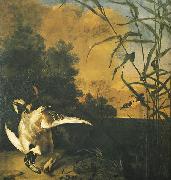 |
Daniel Schultz
|
|
(1615 - 1683) was a famous painter of the Baroque era, born and active in the Polish - Lithuanian Commonwealth. He painted many Polish and Lithuanian nobles, members of the royal family, local Patricians, such as the astronomer Johannes Hevelius, and animals. |
|
|
|
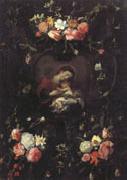 |
Daniel Seghers
|
|
Flemish Baroque Era Painter, 1590-1661
was a Jesuit brother and Flemish Baroque painter who specialized in flower still lifes, and is particularly well-known for his contributions to the genre of "flower garland" painting. His paintings were collected enthusiastically by courtly patrons and he had numerous imitators. Born in Antwerp, Seghers moved to the Dutch Republic around 1601, following the death of his father Pierre and the conversion of his mother to Calvinism.[1] The young artist returned to Antwerp by 1611, where he was enrolled in the guild of St. Luke as a student of Jan Brueghel the Elder.After re-converting back to Catholicism, in 1614 he became a noviciate in the Jesuit order in MechelenUntil 1625 Seghers continued to work as a painter in Antwerp, as well as a stay in Brussels in 1621Sources differ regarding his status in the Jesuit order: some claim that he was ordained a priest in 1625,while other argue that he remained a lay brother. |
|
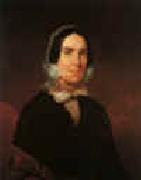 |
David Hunter Strother
|
|
1816-1888
Strother was born in Martinsburg, Virginia (now West Virginia). He studied drawing under Pietro Aneora in Philadelphia, Pennsylvania from 1829 to 1836 when he became a student of Samuel F. B. Morse in New York. Strother was an artist for The Crayon, the leading art journal of the United States at the time, and a frequent contributor to Harper's Monthly. Most of his early work was comprised of landscapes and other outdoor scenes. His art pertained mostly to Virginia and the Southern United States. Prior to the American Civil War, his art was published in books titled The Blackwater Chronicle (1853) and Virginia Illustrated (1857).
During the Civil War, Strother was commissioned by the U.S. Army and assigned as a topographer due to his detailed knowledge of the Shenandoah Valley. During this time, Strother recorded his experiences in the war which he would later publish in Harper's Monthly as "Personal Recollections of the War." His accounts are considered to be unique and are highly praised for their objective viewpoint. He was involved in 30 battles, though never wounded, and was brevetted brigadier general by the War's end.
After the war, topics of his pieces covered a wider range of subjects. Strother began to make works which commented on politics and race relations. He even sketched a portrait of Chief Sitting Bull. Some of his drawings were merely of individuals and groups going about their daily lives.
Strother ended his career as an artist when he was appointed by President Rutherford B. Hayes to be the General Consul to Mexico City in 1879. He returned to West Virginia in 1885 and died there three years later. The New York Times published an obituary in which it is stated that his name was a household one during his career. Strother is buried in Green Hill Cemetery in Martinsburg, West Virginia. |
|
 |
De Scott Evans
|
|
1847-1898
was an American artist who worked in Indiana, Ohio and New York. He was known for portraits, still lifes, landscapes and other genres.
Born in Boston, Indiana to David S. and Nancy A. (Davenport) Evans. His father was a physician. Evans changed his signature to D. Scott Evans and later to De Scott Evans. He also signed paintings with the names David Scott, S. S. David, and Stanley S. David. He attended Miami University's preparatory school in the 1860s, studying with professor Adrian Beaugureau at Miami and later in Cincinnati.
In 1873, he became head of the art department at Mount Union College and after several terms there, he moved to Cleveland to teach and to paint. From Cleveland, he moved to New York. He died along with 500 other passengers and crew, including his daughters when the French steamer La Bourgogne was rammed by a sailing ship in July 1898.
Though he died at sea, there is a marker for him and his daughters in the Oxford Cemetery in Oxford, Ohio. |
|
|
|
|
|
|
|
|
|
|
|
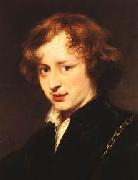 |
DYCK, Sir Anthony Van
|
|
Flemish Baroque Era Painter, 1599-1641
Flemish painter and draughtsman, active also in Italy and England. He was the leading Flemish painter after Rubens in the first half of the 17th century and in the 18th century was often considered no less than his match. A number of van Dyck's studies in oil of characterful heads were included in Rubens's estate inventory in 1640, where they were distinguished neither in quality nor in purpose from those stocked by the older master. Although frustrated as a designer of tapestry and, with an almost solitary exception, as a deviser of palatial decoration, van Dyck succeeded brilliantly as an etcher. He was also skilled at organizing reproductive engravers in Antwerp to publish his works, in particular The Iconography (c. 1632-44), comprising scores of contemporary etched and engraved portraits, eventually numbering 100, by which election he revived the Renaissance tradition of promoting images of uomini illustri. His fame as a portrait painter in the cities of the southern Netherlands, as well as in London, Genoa, Rome and Palermo, has never been outshone;
|
|
|
|
|
|
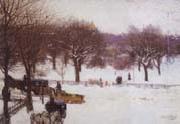 |
Edward Simmons
|
|
October 27, 1852 ?C November 17, 1931,was an American Impressionist painter, remembered for his mural work. He was born in Concord, Massachusetts, the son of a Unitarian minister. He graduated from Harvard College in 1874, and was a pupil of Lefebvre and Boulanger in Paris, where he took a gold medal. In 1894, Simmons was awarded the first commission of the Municipal Art Society, a series of murals ?? ??Justice,?? ??The Fates?? and ??The Rights of Man?? for the interior of the Criminal Courthouse at 100 Centre Street in Manhattan. This court is the criminal branch of New York Supreme Court where many New Yorkers serve on Jury Duty. Later Simmons decorated the Waldorf-Astoria hotel in New York, the Library of Congress, Washington, D.C., and the Capitol at Saint Paul, Minnesota. In the year 1914 he travelled with Childe Hassam to view the Arizona desert paintings of the rising California artist, Xavier Martinez at his Piedmont studio. Simmons was a member of the Ten American Painters, who, as a group, seceded from the Society of American Artists. He was also considered a contributor to the style known as the American Renaissance, a movement after the American Civil War that stressed the relationship of architecture, painting, sculpture and interior design. |
|
 |
Egon Schiele
|
|
1890-1918
Austrian
Egon Schiele Gallery
Egon Schiele (12 June 1890 ?C 31 October 1918) was an Austrian painter, a protege of Gustav Klimt, and a major figurative painter of the early 20th century. Schiele's body of work is noted for the intensity and the large number of self-portraits he produced. The twisted body shapes and the expressive line that characterize Schiele's paintings and drawings make the artist an early exponent of Expressionism, although still strongly associated with the art nouveau movement (Jugendstil). The most important collection of Schiele's work is housed in the Leopold Museum, Vienna.
In 1907, Schiele sought out Gustav Klimt. Klimt generously mentored younger artists, and he took a particular interest in the gifted young Schiele, buying his drawings, offering to exchange them for some of his own, arranging models for him and introducing him to potential patrons. He also introduced Schiele to the Wiener Werkstätte, the arts and crafts workshop connected with the Secession. In 1908 Schiele had his first exhibition, in Klosterneuburg. Schiele left the Academy in 1909, after completing his third year, and founded the Neukunstgruppe ("New Art Group") with other dissatisfied students.
Sitzender weiblicher Akt, 1914Klimt invited Schiele to exhibit some of his work at the 1909 Vienna Kunstschau, where he encountered the work of Edvard Munch, Jan Toorop, and Vincent van Gogh among others. Once free of the constraints of the Academy's conventions, Schiele began to explore not only the human form, but also human sexuality. At the time, many found the explicitness of his works disturbing. |
|
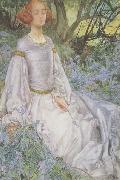 |
Eleanor Fortescue-Brickdale,RWS
|
|
1872-1945
English illustrator, painter and designer. She entered the Royal Academy Schools, London, and won a prize for a mural design in 1897. She specialized in book illustration, in pen and ink and later in colour. Among her many commissions were illustrations to Tennyson's Poems (1905) and Idylls of the King (1911) and Browning's Pippa Passes (1908). She was particularly popular with the publishers of the lavishly illustrated gift-books fashionable in the Edwardian era. She exhibited regularly at the Royal Academy and the Royal Water-Colour Society. She took up stained-glass design (windows in Bristol Cathedral), which modified her style of illustration to flat areas of colour within black outlines. |
|
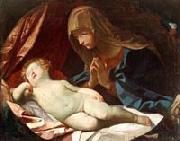 |
Elisabetta Sirani
|
|
(8 January 1638 -25 August 1665) was an Italian Baroque painter whose father was the painter Giovanni Andrea Sirani of the School of Bologna
She was born in Bologna. By age 17 she was a full-fledged engraver and painter and had completed over ninety works. By the time she died at the young age of 27, she had added at least eighty more to her repertoire. Besides being an independent painter by the age of 19, Elisabetta Sirani also ran her family's workshop. When her father became incapacitated by gout, she was burdened with having to support her parents, her siblings and herself, entirely through her art. The stress created by such heavy responsibilities may have been the cause of her early death. It is estimated that in all she produced some 200 paintings, drawings, and etchings. She painted themes such as the Virgin and Child, self portraits, and many more.
Elisabetta Sirani used dramatic light and great movement in her work, which classified it in the Baroque style. She painted many of her larger scale and heavy-themed works publicly and in front of large (and adoring) crowds of on-lookers. Sirani's portraits, mythological subjects, and especially her images of the Holy Family and the Virgin and Child, gained international fame. |
|
 |
Elizabeth Shippen Green
|
|
American Golden Age Illustrator, 1871-1954
was an American illustrator. She illustrated children's books and worked for many years for Harper's Magazine. Green studied with the painters Thomas Anshutz and Robert Vonnoh at the Pennsylvania Academy of Fine Arts (1889-1893). She then began study with Howard Pyle at Drexel Institute where she met Violet Oakley and Jessie Willcox Smith. Life was made for love and cheer; Watercolor and charcoal on board, Harper's Magazine, September 1904She had already begun publishing when she was eighteen and began making pen and ink drawings and illustrations for St. Nicholas Magazine, Woman's Home Companion, and the Saturday Evening Post. In 1911, she signed an exclusive contract with Harper's Monthly. Green was also a prolific book illustrator. Green became close and lifelong friends with Oakley and Smith. They lived together first at the Red Rose Inn (they were called the Red Rose girls by Pyle) and later at Cogslea, their home in the Mount Airy neighborhood of Philadelphia. In 1911, Green married Huger Elliott, an architecture professor. |
|
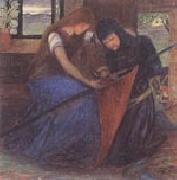 |
Elizabeth Siddal
|
|
British Pre-Raphaelite Artist , 1829-1862
was a British artists' model, poet and artist who was painted and drawn extensively by artists of the Pre-Raphaelite Brotherhood. Siddal was perhaps the most important model to sit for the Pre-Raphaelite Brotherhood. Their ideas about feminine beauty were profoundly influenced by her, or rather she personified those ideals. She was Dante Gabriel Rossetti's model par excellence; almost all of his early paintings of women are portraits of her. She was also painted by Walter Deverell, William Holman Hunt and John Everett Millais, and was the model for Millais' well known Ophelia (1852). Named Elizabeth Eleanor Siddall, after her mother, Lizzie was born on 25 July, 1829, at the family??s home at 7 Charles Street, Hatton Garden. She was born to Charles Siddall and Eleanor Evans, a family of English and Welsh descent. At the time of Lizzie??s birth, her parents were not poverty stricken. Her father had his own cutlery-making business. Around 1831, the Siddall family moved to the borough of Southwark, in south London, a less salubrious area than Hatton Garden. It was in Southwark that the rest of Lizzie??s siblings were born: Lydia, to whom Lizzie was particularly close, Mary, Clara, James and Henry. Although there is no record of her having attended school, Lizzie was able to read and write, presumably having been taught by her parents. She developed a love of poetry at a young age, after discovering a poem by Tennyson on a scrap of newspaper that had been used to wrap a pat of butter. This discovery was one of Lizzie??s inspirations to start writing her own poetry. Model for the Pre-Raphaelites Siddal, whose name was originally spelt 'Siddall' (it was Rossetti who dropped the second 'l') was first noticed by Deverell in 1849, while she was working as a milliner in Cranbourne Alley, London. She was the daughter of Charles Crooke Siddall, a cutler who claimed that his family descended from nobility, and his wife Elizabeth Eleanor Evans Siddall. Neither she nor her family had any artistic aspirations or interests. She was employed as a model by Deverell and through him was introduced to the Pre-Raphaelites. The twenty-year-old with her tall thin frame and copper hair was the first of the Pre-Raphaelite stunners. William Michael Rossetti, her brother-in-law, described her as "a most beautiful creature with an air between dignity and sweetness with something that exceeded modest self-respect and partook of disdainful reserve; tall, finely-formed with a lofty neck and regular yet somewhat uncommon features, greenish-blue unsparkling eyes, large perfect eyelids, brilliant complexion and a lavish heavy wealth of coppery golden hair. |
|
|
|
|
|
|
|
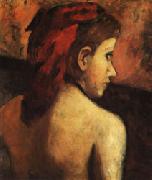 |
Emile Schuffenecker
|
|
French Post-Impressionist Painter, 1851-1934
French painter. In 1871 he entered the stockbroking firm of Bertin, where he met Paul Gauguin who was also employed there. In his spare time he took drawing classes and studied with Paul Baudry and Carolus-Duran, making his debut at the Salon in 1874. He also became acquainted with Armand Guillaumin and Camille Pissarro. Following the stock market crash of 1882, he, like Gauguin, was forced to leave Bertin and gained a job teaching art at the Lycee Michelet in Vanves. In 1884 he was one of the co-founders of the Salon des Independants and took part in the 8th and last Impressionist Exhibition in 1886, the year in which he also met Emile Bernard in Concarneau and sent him on to see Gauguin, thus initiating their joint development of CLOISONNISM. Though he mixed with the members of the Pont-Aven group his own artistic tastes were very different. While Gauguin and his disciples had little more than contempt for Neo-Impressionism, Schuffenecker was much interested in pointillist techniques. |
|
|
|
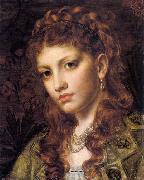 |
Emma Sandys
|
|
Emma Sandys (born Mary Ann Emma Sands) (1843 - 1877) was a 19th-century English painter.
Sandys was born in Norwich, England in 1843. She was taught by her father, Anthony Sands, and worked in portraits in both oil and chalk, often in medieval or period dress. Her earliest dated painting is marked 1863 and she exhibited her works in both London and Norwich between 1867 and 1874.
Sandys did most of her work around Norwich but may have spent time in the studio of her brother, Frederick Sandys, in London.
She died Norwich in November 1877. |
|
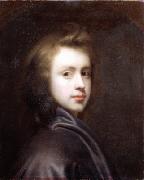 |
Enoch Seeman
|
|
Enoch Seeman the Younger was born in Danzig, now Gdansk, Poland, around 1694. His father, also Enoch was born around 1661, and the Seeman family were painters.
Having been brought to London from his home of Flanders by his father in 1704, the younger Seeman's painting career as we know it began with a group portrait of the Bisset family in the style of the portraitist Godfrey Kneller, now held at Castle Forbes in Grampian, Scotland, and dated by an inscription 1708.
As a painter to the British royal court Seeman the Younger completed portraits of George I, in 1730, in the robes of his coronation and of George II some years later. The first of these pictures is held at the Middle Temple in London, England, and the second is at Windsor Castle in Berkshire, England, part of the royal collection.
In 1734, Seeman painted a portrait of Jane Pratt Taylor, daughter of Lord Chief Justice John Pratt. The portrait was sent to William Byrd, II of Westover, in Virginia, where it became part of the largest colonial portrait collection of the early eighteenth-century. The painting is now part of the collection of the Virginia Historical Society.
The Yale University Art Gallery owns a portrait of Elihu Yale in 1717 by Seeman and the Metropolitan Museum in New York, USA owns his rendering of Sir James Dashwood, described by the Grove Dictionary of Art as 'Exceptionally lively'. Also by Seeman the younger, Abraham Tucker in 1739 at the National Portrait Gallery in London, England, and various copies of sixteenth and seventeenth century portraits. The National Trust owns two examples of this set of his work - at Dunham Massey in Cheshire, England, a copy of a portrait of Lady Diana Cecil, and at Belton House in Lincolnshire, England, of Lady Cust and her Nine Children. |
|
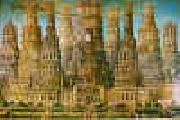 |
Erastus Salisbury Field
|
|
1805-1900
American painter. He studied with Samuel F. B. Morse in New York during the winter of 1824-5. On his return to the rural isolation of Leverett, MA, he painted his earliest known work, the portrait of his grandmother Elizabeth Billings Ashley (Springfield, MA, Mus. F.A.). His career as an itinerant portrait painter began in 1826, most of his commissions coming through a network of family associations in western Massachusetts and Connecticut. The portraits of 1836-40 are considered his best. From 1841 he lived mainly in New York, where he expanded his subject-matter to include landscapes and American history pictures. There he presumably studied photography, for on his return to Massachusetts he advertised himself as a daguerreotypist. His few portraits painted after 1841 are copied from his own photographs and lack the expressive characterization and decorative power of his earlier work. From 1865 to 1885 his paintings were based primarily on biblical and patriotic themes. The Historical Monument of the American Republic (1867-88; Springfield, MA, Mus. F.A.) stands alone in American folk art in size (2.82*3.89 m), scope and imaginative vision. Inspired by plans for a national celebration of the centennial of the USA in 1876, Field painted an architectural fantasy of eight towers linked by railway bridges and trains at the tops, with the history of the USA in low-relief sculpture on the exterior surfaces of the towers. Field added two more towers to the painting in 1888 and thereafter retired. |
|
|
|
|
|
|
|
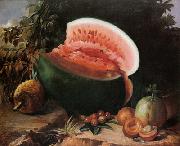 |
Estevao Silva
|
|
Estevao Roberto da Silva (Rio de Janeiro, c. 1844 - idem, 9 de novembro de 1891) foi um importante pintor e professor brasileiro da segunda metade do seculo XIX. Primeiro pintor negro de destaque formado pela Academia Imperial de Belas Artes, notabilizou-se por suas naturezas-mortas, sendo considerado um dos maiores expoentes da arte brasileira no genero. |
|
|
|
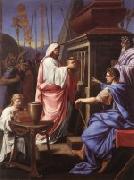 |
Eustache Le Sueur
|
|
French Baroque Era Painter, 1616-1655.
French painter and draughtsman. He was one of the most important painters of historical, mythological and religious pictures in 17th-century France and one of the founders of French classicism. He was long considered the 'French Raphael' and the equal of Nicolas Poussin and Charles Le Brun. His reputation reached its zenith in the first half of the 19th century, but since then it has been in decline, largely as a result of the simplified and saccharine image of the man and his art created by Romantic writers and painters. Nevertheless, more recent recognition of the complexity of his art has resulted in a new interest in him and in his place in the evolution of French painting in the 17th century. Despite the almost total absence of signed and dated works, the chronology of Le Sueur's oeuvre can be established with the aid of a few surviving contracts, dated engravings after his paintings and the list of works published by Le Comte in 1700. |
|
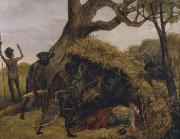 |
Evans, De Scott
|
|
American, 1847-1898
was an American artist who worked in Indiana, Ohio and New York. He was known for portraits, still lifes, landscapes and other genres. Born in Boston, Indiana to David S. and Nancy A. (Davenport) Evans. His father was a physician. Evans changed his signature to D. Scott Evans and later to De Scott Evans. He also signed paintings with the names David Scott, S. S. David, and Stanley S. David. He attended Miami University's preparatory school in the 1860s, studying with professor Adrian Beaugureau at Miami and later in Cincinnati. In 1873, he became head of the art department at Mount Union College and after several terms there, he moved to Cleveland to teach and to paint. From Cleveland, he moved to New York. He died along with 500 other passengers and crew, including his daughters when the French steamer La Bourgogne was rammed by a sailing ship in July 1898. |
|
|
|
|
|
|

